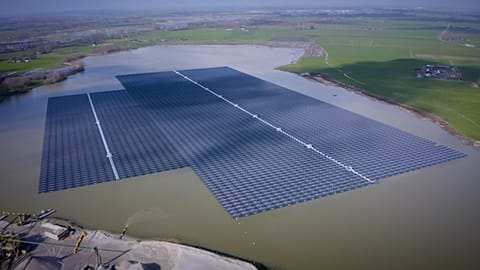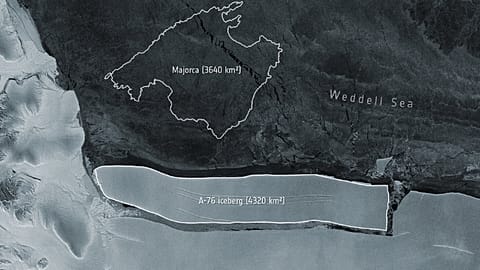The world's first-ever high-altitude floating solar farm produces clean green energy in such an efficient way that its creators are looking to expand and use the technology in similar locations around the world.
For the duration of Euronews' Green Week, our magazine and news teams are exploring stories and solutions for a better planet from across Europe.
The small village of Bourg Saint Pierre in Switzerland is home to 200 souls. It's quiet, picturesque and relaxing. Visitors to the village know it for its fabulous walks, winter ski resort and its high-altitude floating solar farm.
It's true that most people don't choose their holiday destinations for the best views of solar panels, but the high-altitude floating solar farm in Bourg Saint Pierre is turning heads and is one of a kind. People are making a detour to check out this project, which is the first high-altitude floating solar farm in the world.
How it works
The farm was put in place in 2019 by Romande Energie, one of Switzerland's main energy companies.
The incredible structure sits at 1810 metres above sea level, floating on a man-made reservoir called Lac des Toules. It is made up of 2240 square metres of solar panels, arranged in five rows of eight.
Its panels are able to produce 50% more energy than panels on low-lying land. The reason for this is that mountainous conditions make solar radiation stronger.
Maxime Ramstein, Project Manager for Romande Energie, tells us that it's in an ideal location because in the mountains there are "lower temperatures which mean better efficiency and the albedo effect, which is the solar radiation, which is very high on the ground, on the ice and on the snow".
All in all, this pilot project produces 800 000 kWh per year, the equivalent of 220 household energy needs.
Low Environmental impact
The reservoir is drained once a year and filled by the melting snow during Spring and Summer. There's not a lot of flora and fauna there due to the draining. Ramstein says that in this respect "it has a low environmental impact".
The structure is expected to have a life span of 50 years. The solar modules will rotate on two 25 year cycles.
Romande Energie now wants to double the size of this floating high altitude solar farm in 2022 to create over 22 000 000 kWh per year, power for over 6000 households. The company also wants to try this same technology in other high-altitude locations.
The project is also inciting interest from other companies looking for ways to create green energy efficiently.


















